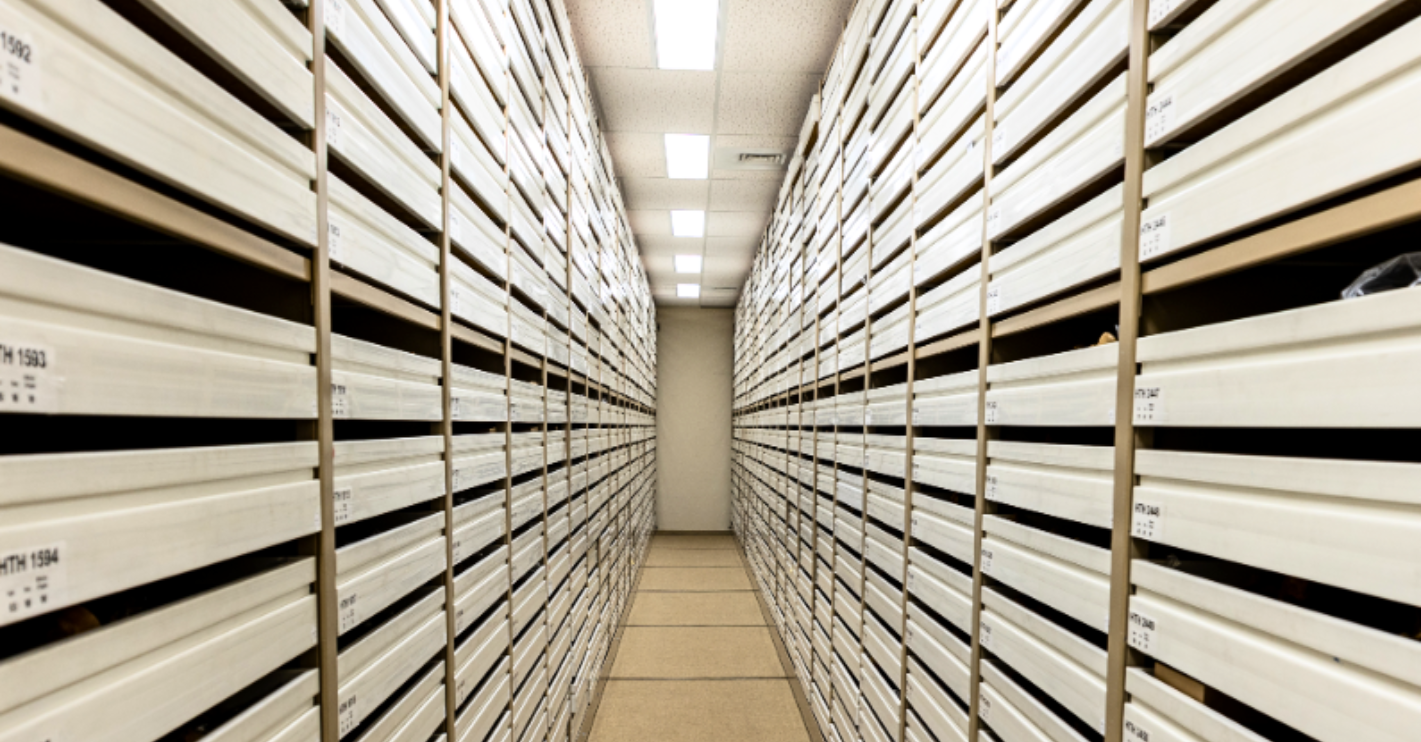
Biological anthropology concerns the study of human beings and our living and fossil relatives. The Cleveland Museum of Natural History has several anthropologists who conduct ongoing research spanning human origins; modern human evolution and variation; health, diet, and disease; and forensic science. The team collectively curates the Museum’s biological anthropology collections, including the Hamann-Todd Human and Non-Human Primate Collections. Brief descriptions of our biological anthropology collections can be found below.
CLEVELAND MUSEUM OF NATURAL HISTORY AND CASE WESTERN RESERVE UNIVERSITY JOINT STATEMENT ON HUMAN REMAINS
The Hamann-Todd Osteological Collection is under legal control of Case Western Reserve University (CWRU) and on permanent loan to and under the care of the Cleveland Museum of Natural History (the Museum). It is our policy to respond promptly and respectfully to any repatriation request and determine appropriate next steps with the inquiring party. The Museum and CWRU are supportive of repatriation, we welcome claims, and we have respectfully repatriated human remains and funerary objects that fall under federal law (Native American Graves Protection and Repatriation Act) as recently as 2021. At this time, it is our policy not to provide details on repatriation requests publicly out of respect for the process.
BIOLOGICAL ANTHROPOLOGY COLLECTIONS
All biological anthropology collections are temporarily closed to researchers as we transition to new collection spaces and review internal policies.
We are not currently accepting research requests for projects involving the Hamann-Todd Human Osteological Collection, the Hamann-Todd Non-Human Primate Collection, the Dudley Peter Allen Pathological Collection, or the Johns Hopkins Fetal Collection. This includes new projects using existing datasets, or any requests for digital data. Projects that have already been approved and for which data have been collected can proceed as approved.
We are unable to provide a timeline for the reopening of the collections, and we cannot provide any letters of support for projects in development, including for grant application purposes.
We are currently revising our policies for research access. Please monitor this page for updates about the timeline and process for requesting access. In the meantime, please direct all inquiries about the collections to
[email protected].
This collection contains more than 3,000 skeletonized individuals from Cleveland, Ohio, collected by Carl A. Hamann and T. Wingate Todd between 1912 and 1938. The Hamann-Todd Osteological Collection is under legal control of Case Western Reserve University and on permanent loan to and under the care of the Museum. We are currently revising our policies for research access in preparation for the collection’s reopening.
Learn more about the Hamann-Todd Human Osteological Collection.
DUDLEY PETER ALLEN PATHOLOGICAL COLLECTION
This collection contains more than 400 skeletal elements with recorded pathological cases illustrating bone disease and trauma as it appeared in individuals who lived prior to the 1920s—before the advent of antibiotics. Note that this collection primarily contains isolated skeletal elements rather than full individuals.
Access to this collection is limited due to its sensitivity and fragility.
JOHNS HOPKINS FETAL COLLECTION
This collection contains crania from 112 skeletonized fetal and infant individuals collected by Adolph Hans Schultz between 1918 and 1951. Access to this collection is limited due to its sensitivity and fragility.
HAMANN-TODD NON-HUMAN PRIMATE OSTEOLOGICAL COLLECTION
This collection contains around 1,000 non-human primate skeletons purchased by Carl A. Hamann and T. Wingate Todd from private collections and the taxidermy firm Gerrard & Sons of London. This collection mostly includes the great apes—chimpanzees, gorillas, and orangutans.
FOSSIL HOMINOID CAST COLLECTION
This collection consists of more than 3,000 casts of various fossil hominoids and other primates. It is largely used for comparative analysis in human evolutionary studies. The department’s fossil cast collection consists primarily of casts of fossil specimens recovered from sites in eastern Africa and South Africa, with some from Eurasia. Almost all the casts of
Australopithecus afarensis specimens (including Lucy and those from A.L. 333) discovered before the 1980s are present in the collection.
CLEVELAND MUSEUM OF NATURAL HISTORY BIOREPOSITORY
The Cleveland Museum of Natural History Biorepository curates a research collection of modern human tissue samples (hair, teeth, fingernails) and their associated de-identified data. Established in 2015 to curate biological samples collected through Museum research projects
, the repository is housed in the Museum’s Molecular Laboratory. Samples are available for research purposes only and are ethically managed in accordance with
IRB-approved protocols. Inquiries and requests may be directed to Dr. Nicole Burt at
[email protected].